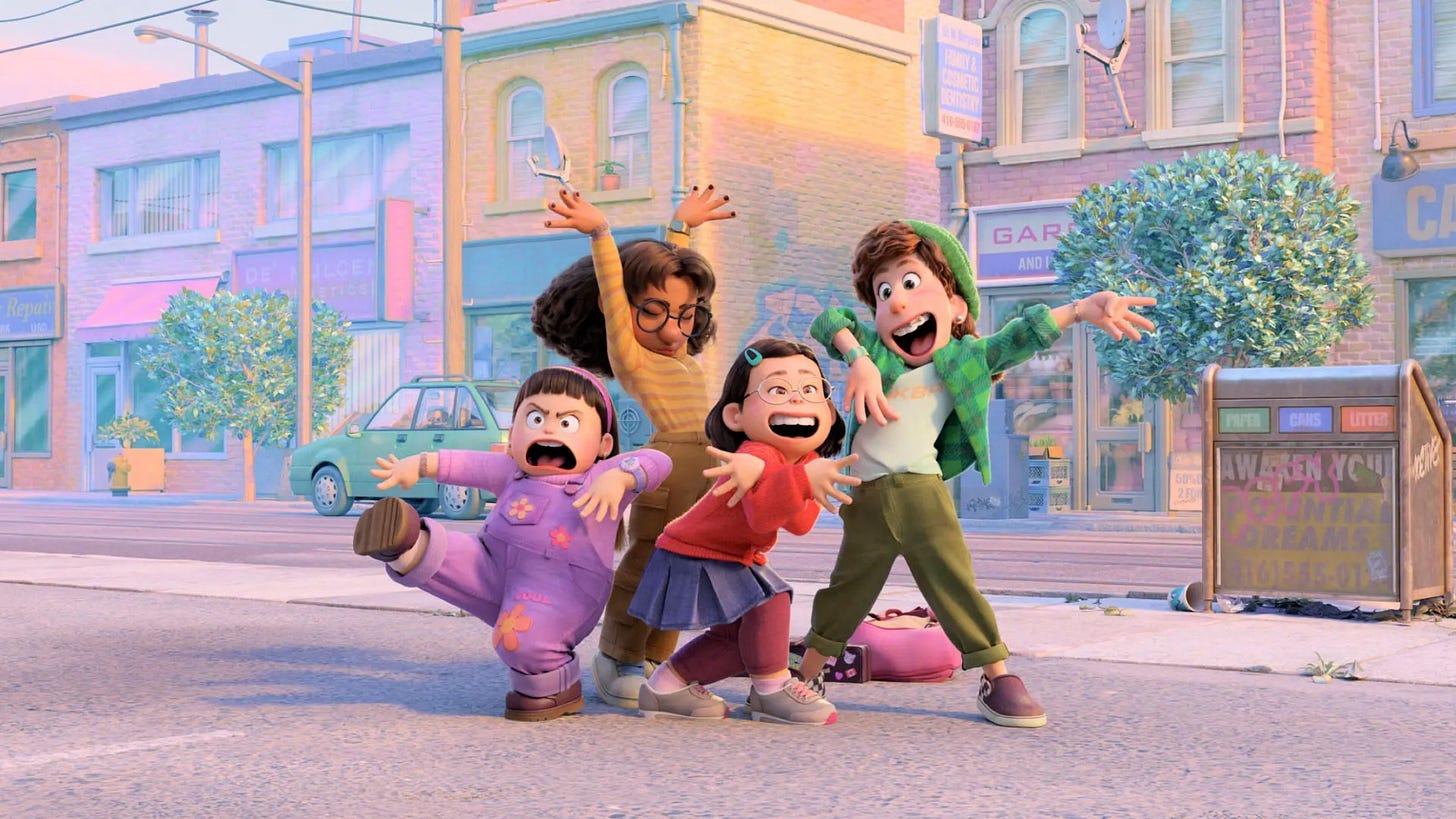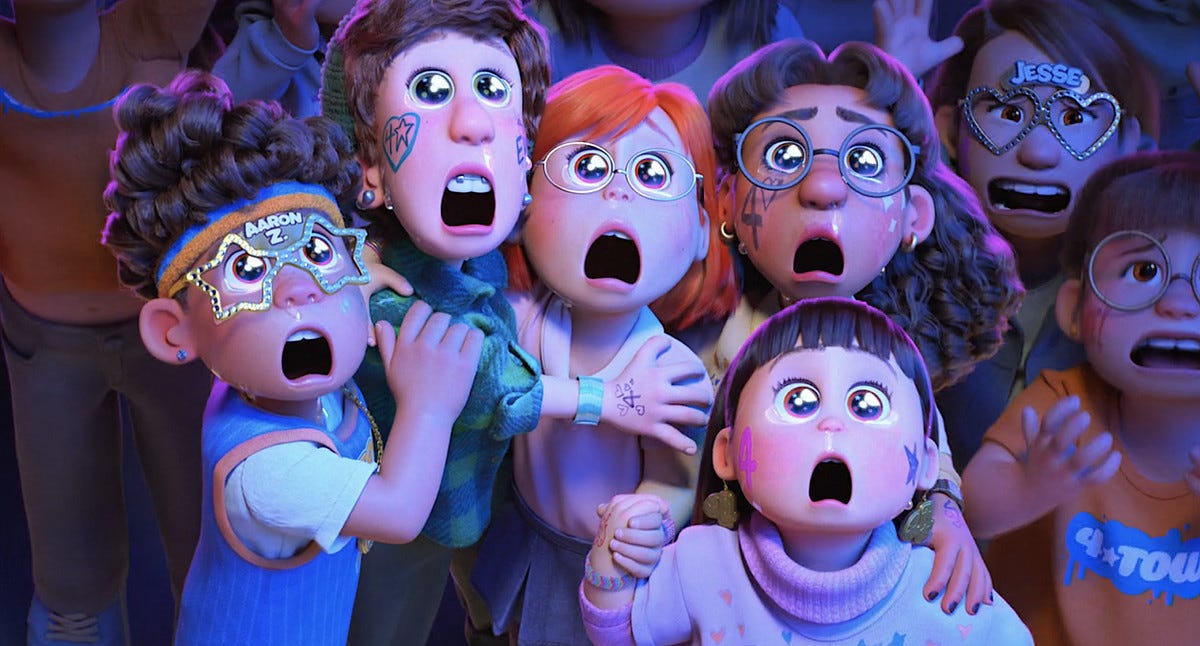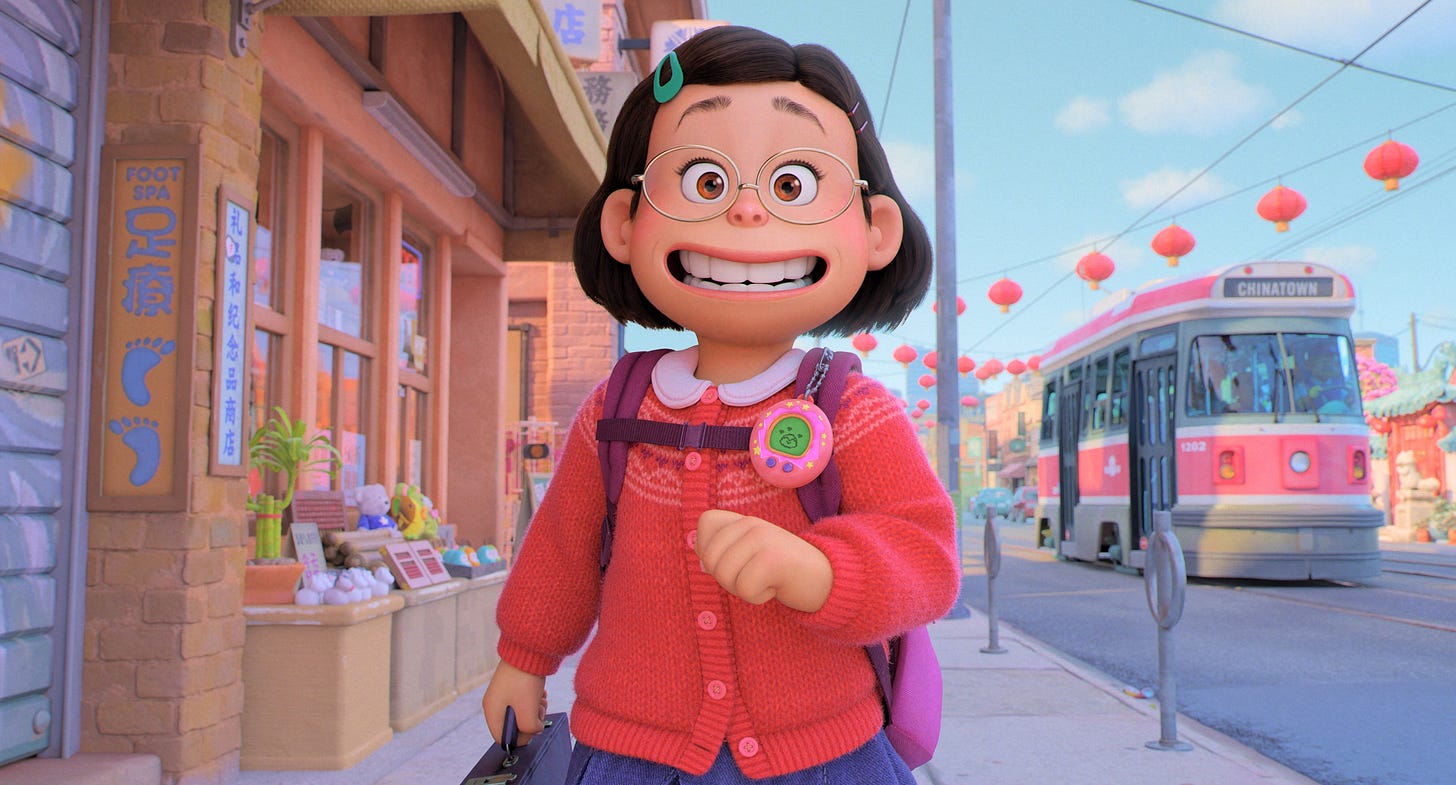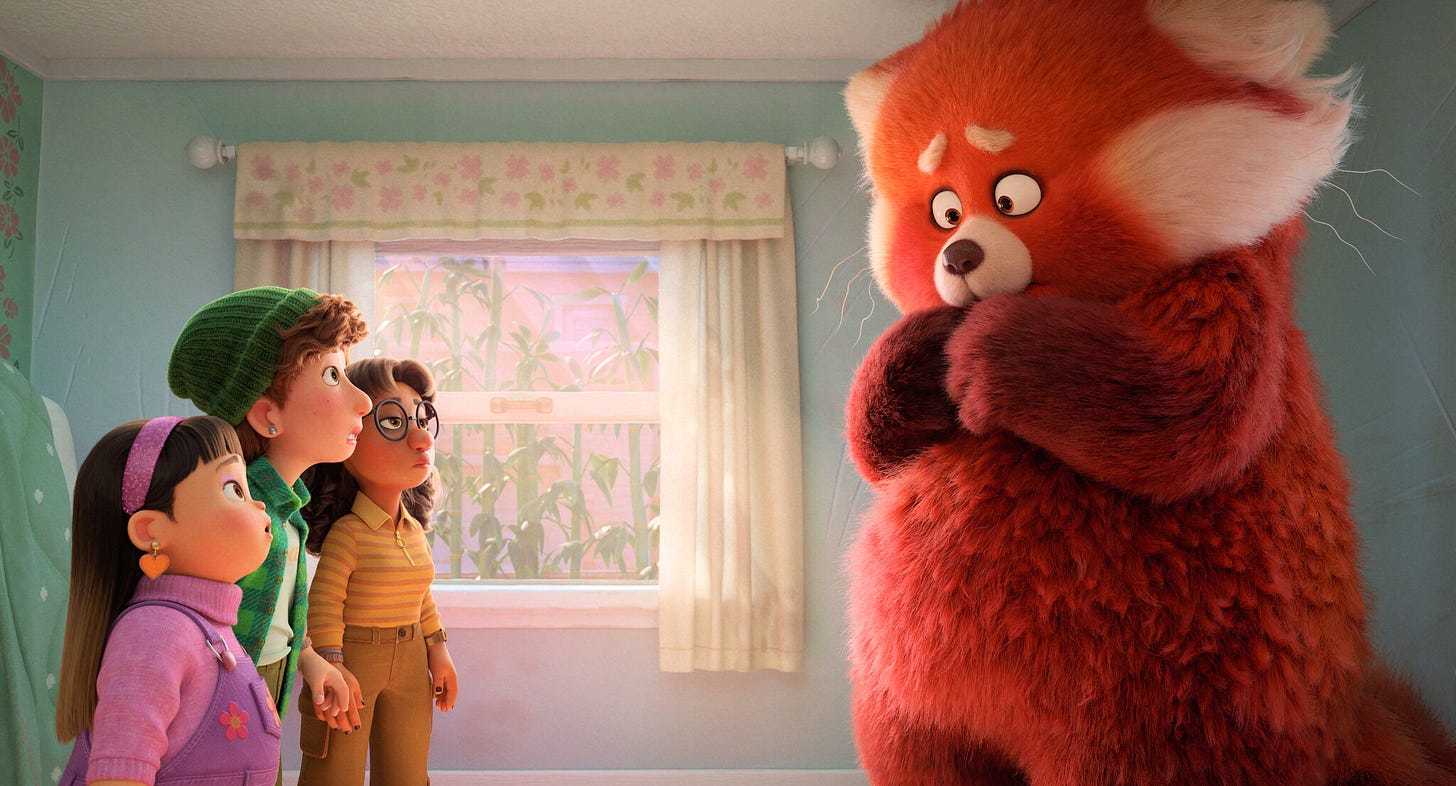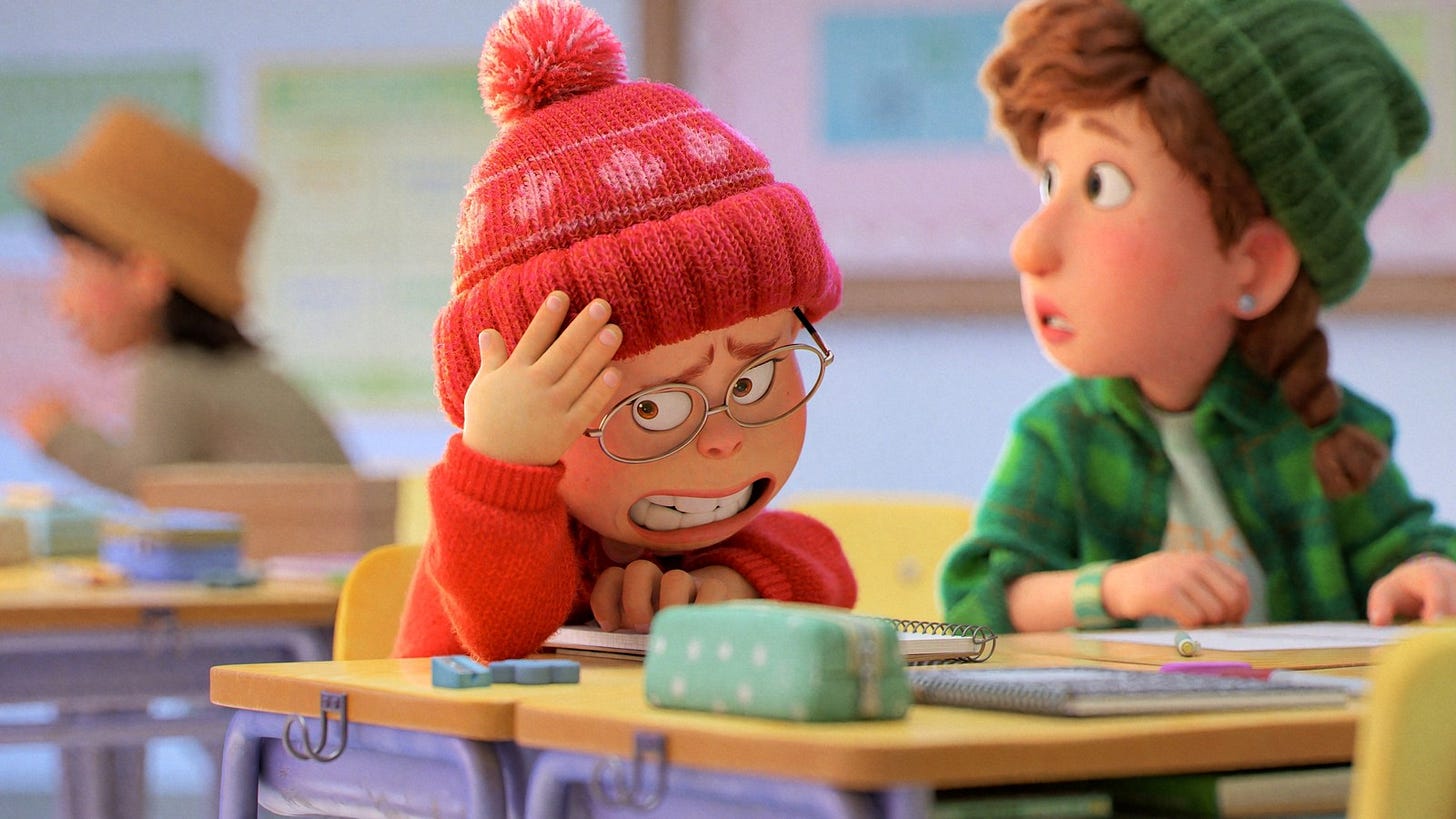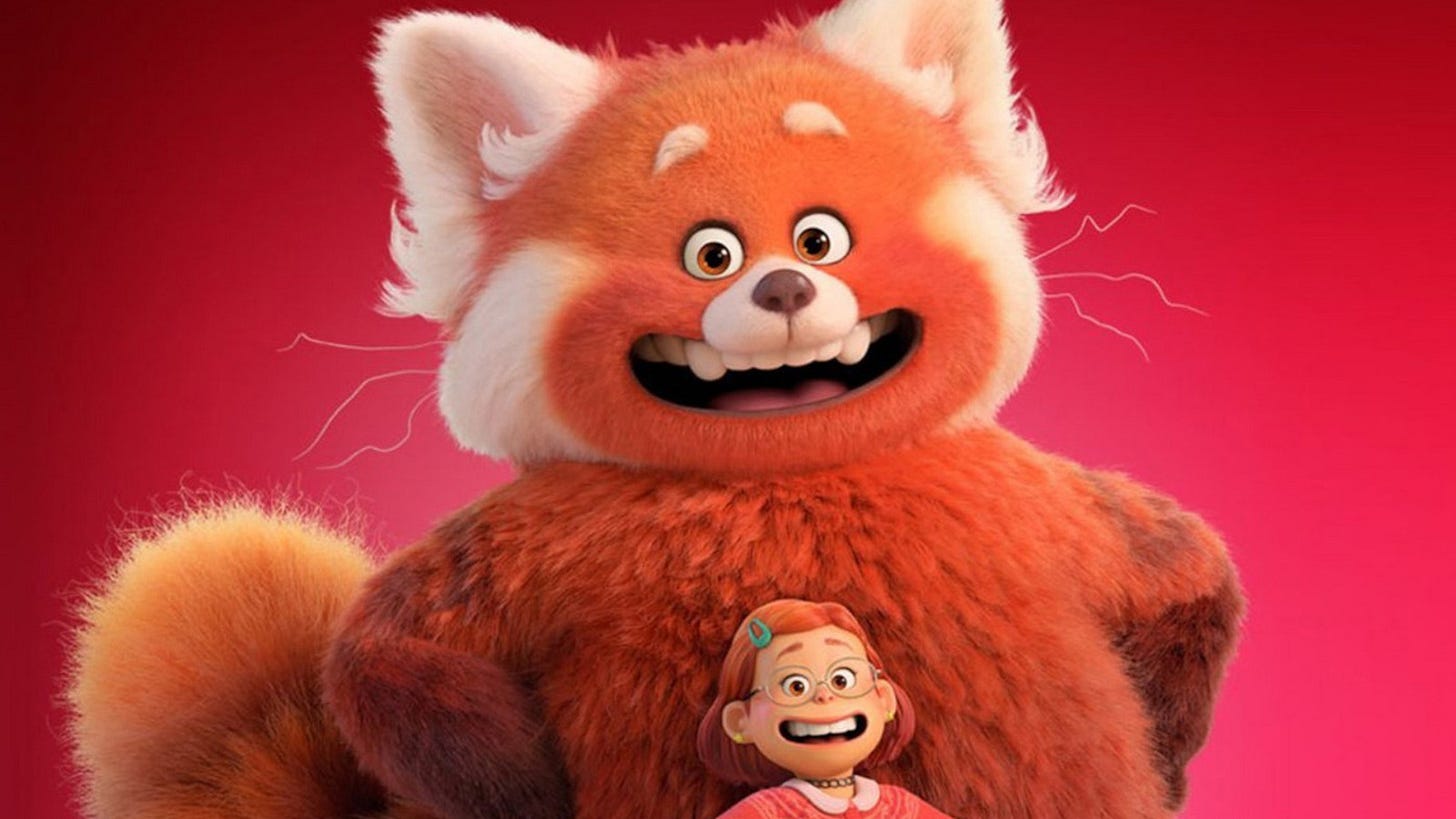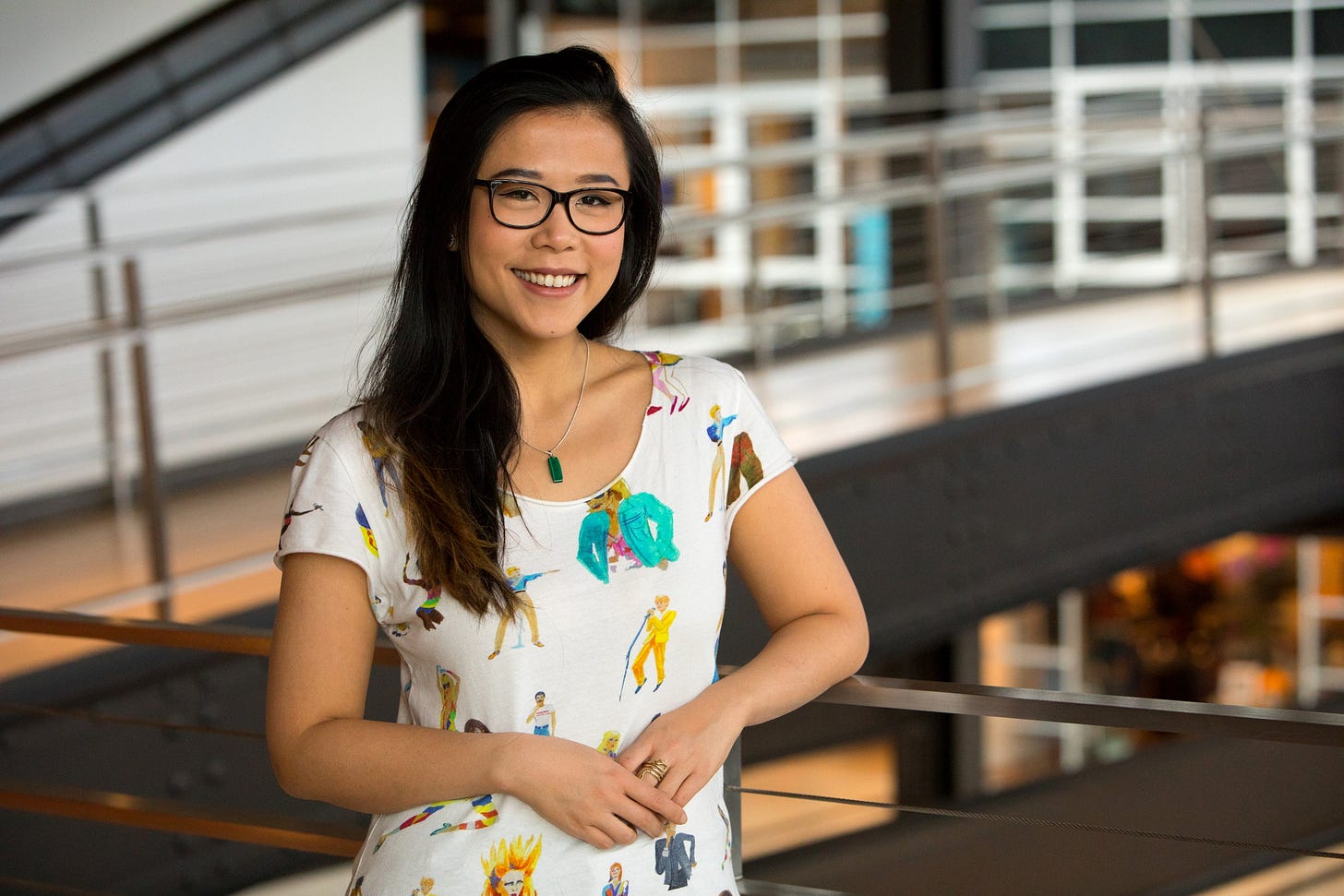Turning Red marks a turning point for Pixar Animation
An authentic and visually inventive coming-of-age story bursting with personality
As he moved his animation efforts from comic shorts to full-fledged features in the mid-1930s, Walt Disney, partially motivated by his need for validation from the industry at large, made realism the core tenet of his vision for American animation. For Snow White, he would have his animators rotoscope real actresses to get her movements just right. For Bambi, he brought real wildlife into the studio for his animators to study. This wasn’t Steamboat Willie anymore - this was art (as if Steamboat Willie wasn’t art in its own way). This philosophy took root, and it created a culture at Walt Disney Animation that, even decades after its originator’s passing, has guided their feature animation projects, for better or for worse.
Turning Red feels out of place in the modern Pixar pantheon. Due to technical limitations, earlier films from the studio felt a bit more surreal and elastic in their character designs and animations. But more recent fare from both Disney and Pixar, with some notable exceptions, strive for photorealism, dazzling us with beautifully rendered computer-generated images and naturalistic character movement and expression. To be sure, Turning Red’s visuals will take your breath away, but Domee Shi’s feature debut feels closer to The Mitchells vs. the Machines than Luca or Encanto. As I watched an almost manic opening sequence chock full of stylized character action and minute detail, the commitment to the medium of animation was on full display. Bursting with personality, this is the most expressive film that Pixar has made since the original Toy Story.
The film’s unique visual identity is a tremendous complement to the story’s subject matter, which is incredibly idiosyncratic, thoughtfully authentic, and, above all, human. This coming-of-age tale is anything but vague; we follow a 13-year old | Chinese-Canadian girl | in Toronto | in 2002. This Mad Libs arrangement of detail is what makes personal storytelling so electric. There is a universality that is paradoxically born out of intense specificity, which only makes sense as each of our own lives are intensely specific.
Following Meilin Lee (or just Mei), we learn that any strong emotion will lead to her transformation into a giant red panda. Upon seeing trailers for the film, after my initial excitement at the animation style, this premise brought to mind other unfortunate examples of animated films with protagonists of color that get turned into animals, or magical creatures, or abstract figures. Would such a clearly inventive film fall into such problematic cliches? I’m happy to report that Turning Red manages to find its own path; Mei is not exclusively bound to this furry form, unlike many other aforementioned protagonists. The red panda also serves as both an authentic cultural reflection and a powerful metaphor for puberty. The implications of Mei’s struggle with her “red monster” is not lost on this critic, and there are some great miscommunications surrounding menstruation.
Let’s pause for a moment here to revel in the fact that a Pixar film - made during its time under Disney, no less - even discusses menstruation, with pads playing a key role in several comedic exchanges. Even more remarkable is the abject horniness that Mei and her friends fall victim to, with the best sequence in the film revolving around the shame that these feelings can elicit. It’s refreshing to see such strikingly honest conversations in an animated film, especially a Disney/Pixar one.
Despite all of these feathers in the film’s cap, it is not without its flaws. Any elements that take a safer, more conventional route create a dissonance with the film's more daring approaches, particularly the entire red panda conceit. While this film handles this trope better than most, it is still a tired trope, and my empathy for Mei seemed to wane in her red panda state. There’s just an appeal to her human character design and animation that’s lost when she transforms into a fairly conventional animal design.
Turning Red is a fantastic example of what happens when filmmakers from underrepresented groups get their chance to share their stories. The result, whether it’s a low-budget indie film or a $175 million animated film, is a textured experience saturated with character, style, and heart, putting realism of experience above realism of imagery, and setting a standard for Disney animation. Domee Shi made a splash with her wildly effective short Bao, but hopefully this film gives her the chance to tell many more stories for years to come.


